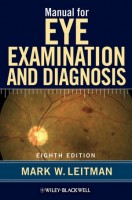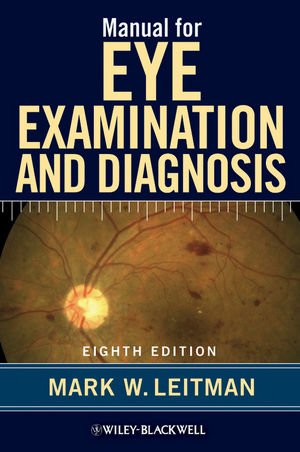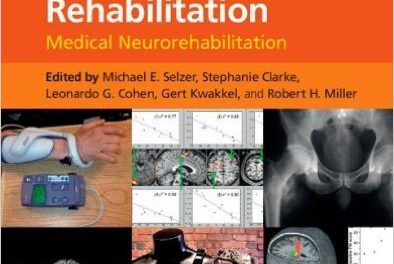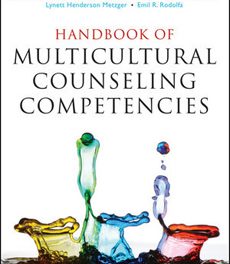 Author: Mark W. Leitman, MD
Author: Mark W. Leitman, MD
Publisher: Wiley-Blackwell – 157 pages
Book Review by: Nano Khilnani
Experts are people who know their subject well. But they are outstanding when they are able to present, in written form, a lot of information in a small number of pages. This means they understand their subject thoroughly not just from gaining knowledge through years of studying, but also from gaining experience and insight by spending thousands upon thousands of hours examining diseases and disorders in patients.
That is the case here with Dr. Leitman. And his compact and handy book can be carried in the lab coat pocket of an ophthalmologist or optometrist, medical resident or student.
With this highly useful book for eye care professionals, Dr. Leitman has been able to pack, in less than 160 pages, a tremendous amount of information on numerous eye ailments and conditions.
Pictures speak a thousand words, as has been said, so in this book, Dr. Leitman has smartly used more than 500 of them to convey, in full color, the details and specifics of many forms of abnormality and disease observed in the different parts of the eye.
You’ll be able to see and read such synopses of conditions in different components of the human optical system from A to Z in, but not limited to: the aqueous, anterior chamber, choroid, ciliary body, conjunctiva, cornea, eyelid, fovea, iris, lens, macula, optic nerve, pupil, retina, sclera, vitreous, and zonule.
As a matter of fact, to make your learning easier, Dr. Leitman starts out by presenting a drawing of the eye with the above-mentioned parts, just left of the title page.
In this gem of a book, you will read about and see the common conditions, disorders, and diseases prevalent in each part of the eye. For example, conjunctivitis in the conjunctiva; from corneal abrasion and ulcer to dystrophy to keratitis in the cornea; from blepharitis to ptosis to xanthelasma in the eyelid; from cataracts to other conditions in the lens.
You can learn more about glaucoma, optic neuropathy, and other disorders of the optic nerve; choroiditis to diabetic retinopathy to exudative retinopathy to macular degeneration to retino-choroiditis to scleritis in the choroid, retina and sclera areas of the eye.
You can also study about the disorders of ocular muscles, binocular movement, accommodation and refraction such as: anisometropia, astigmatism, esotropia, exotropia, hypermetropia, myopia, ophthalmoparesis, ophthalmoplegia, ophthaloplegia, presbyopia, and strabismus.
There is much more covered about many other abnormalities, conditions, disorders, and diseases of the eye, and their diagnosis and treatment, in this compact and highly useful book. Here below is an overview of the book’s contents in each of its seven succinct chapters, each one having loads of images with captions:
- Medical history
- Measurement of vision and refraction
- Neuro-ophthalmology
- External structures
- The orbit
- Slit lamp examination and glaucoma
- The retina and vitreous
This book was first published about 40 years ago when the author was still a medical student. It has become highly popular among students of ophthalmology and optometry, as well as with practitioners. The fact that it has been updated seven times and being used by hundreds of thousands of eye care students and professionals is testimony not only to its popularity but also to the exemplary dedication to his profession by Dr. Mark W. Leitman.
Mark W. Leitman, MD is Chairman of the Department of Ophthalmology at University Surgicenter in East Brunswick, New Jersey.
He attended Brooklyn Technical High School, Brooklyn Polytechnic Institute, and New York Medical College. In college, he studied chemistry with a National Science Foundation research grant and was captain of the university wrestling team for two years.
At New York Medical College, he was a member of the Alpha Omega Alpha, which is the national medical honor society. He performed his ophthalmology training at Albert Einstein Medical School, where he was chief resident.
He applied for, and received, a research grant from the National Eye Institute and became the first person in the world to demonstrate the 24 hourly changes in intraocular eye pressure. After medical school, he was a Captain in the U.S. Army.







